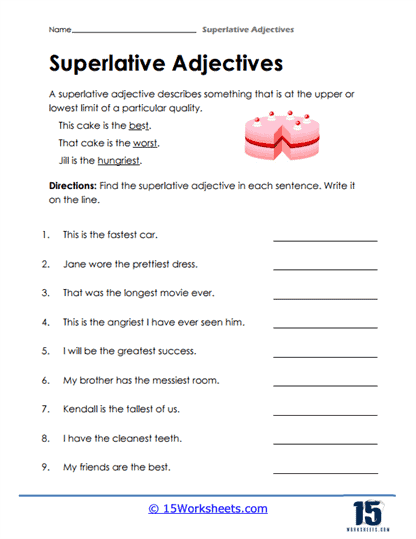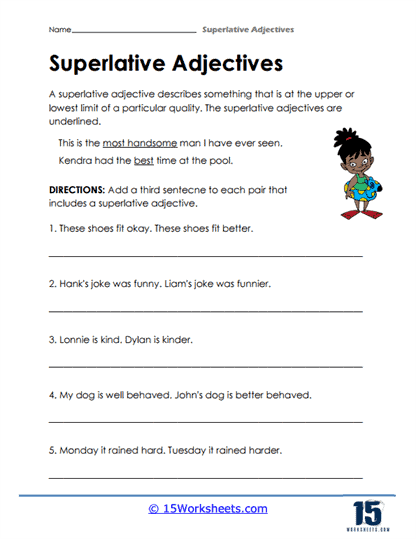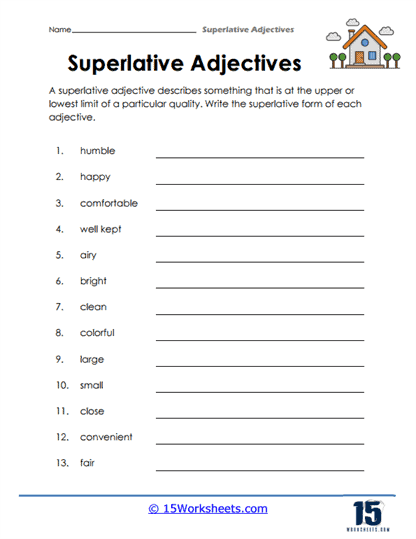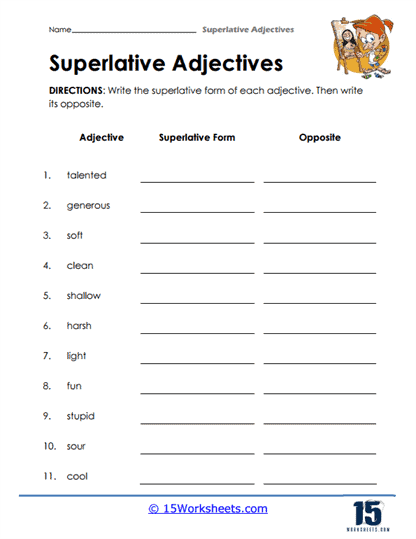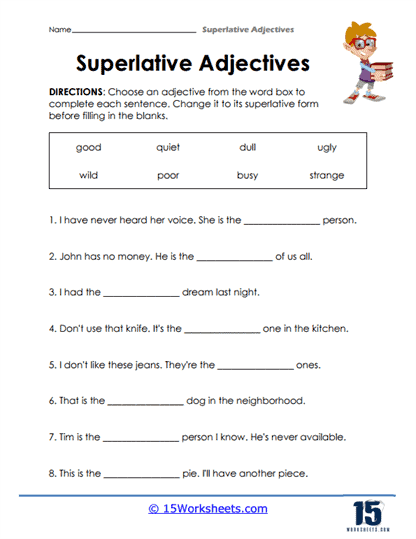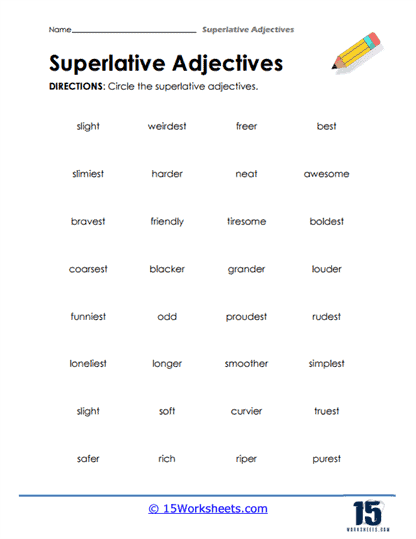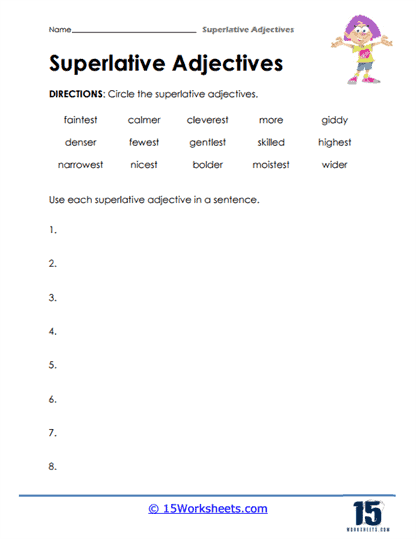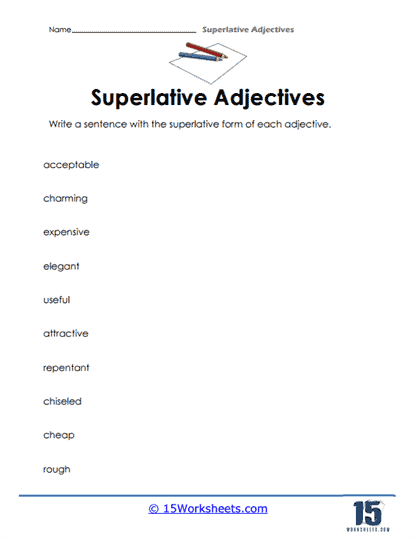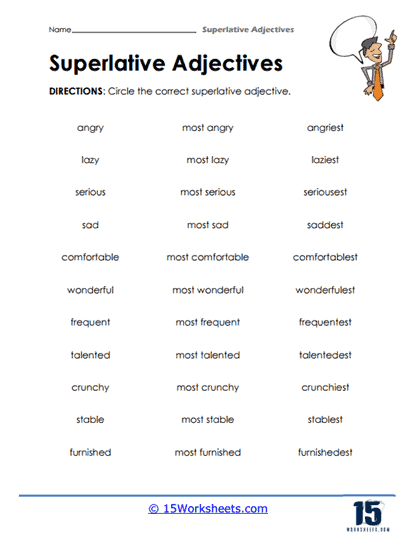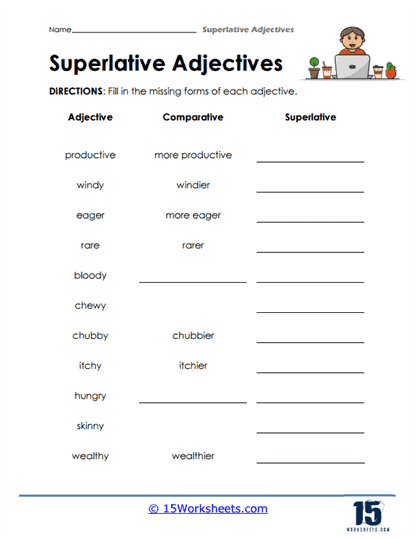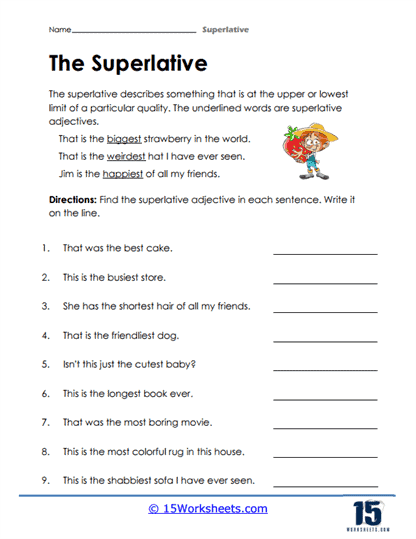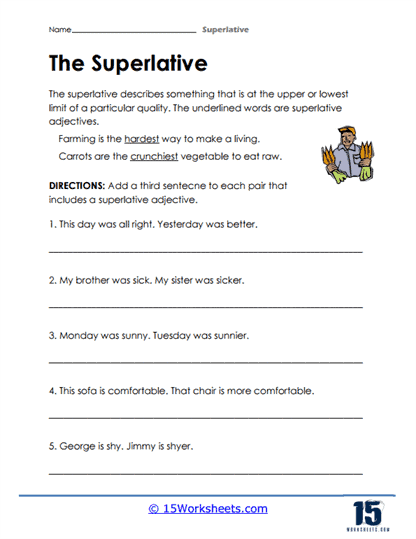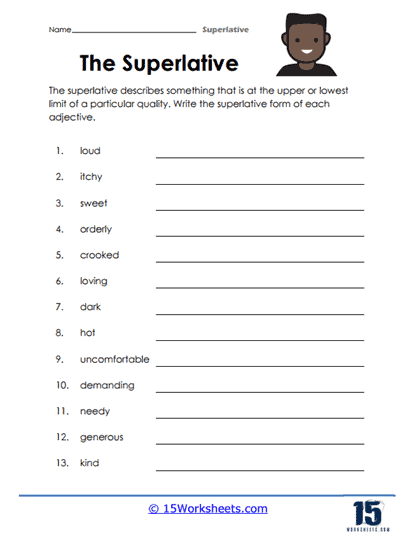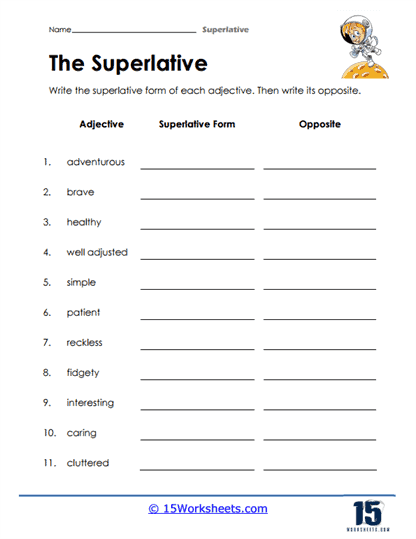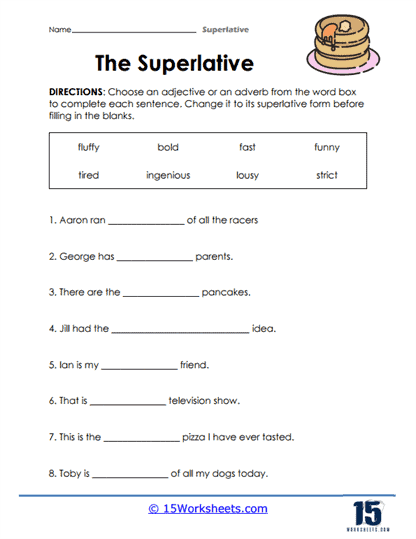Superlative Adjectives Worksheets
All About These 15 Worksheets
Superlative and comparative adjectives are both used to compare two or more nouns. Similar to all adjectives, comparative and superlative adjectives add to the description of a noun or pronoun by describing it in greater detail.
When describing anything that is at the maximum or lower extent of quality, superlative adjectives are utilized (highest, tallest, etc.). They are employed in clauses that contrast a topic with a collection of objects.
Nouns and pronouns are described and modified by adjectives. Adjectives include phrases like outrageous, humorous, clever, and funny. But occasionally, these adverbs are insufficient on their own. Saying that a joke is not only humorous but also so funny that no other joke can compare to it could be appropriate. You may also remark that a shoe stinks so awful that it overpowers all other foul odors.
Although there are various kinds of adjectives, the superlative adjective, in particular, can be useful in certain circumstances. You may state that joke was the funniest one you’ve ever heard or that a smelly sneaker has the worst odor in human history by employing superlative adjectives.
So, if you want to learn more about superlative adjectives and become one of the best grammarians ever (and boy, do you!), keep reading. Outside of grammar, the word “superlative” has various meanings. Superlative is a word that describes anything as being the greatest or highest of its kind, superior to all others, or superb. A superlative cheeseburger, for instance, would be exceptionally tasty or of very high quality. We shall go into more detail on the use of the word “superlative” as a noun later.
Let’s pretend we have three sticks that are one foot, two feet, and three feet long to demonstrate how we utilize superlative adjectives. One of these three, measuring three feet long, may be characterized. The three-foot-long stick among these three can be considered the longest since it triumphs in the measurement of length. The one-foot stick is also the shortest since it would triumph in a contest for shortness.
The positive form of an adjective, the beginning form of the adjective, is what you will usually see when you look up a word in the dictionary. For instance, the positive version of the adjectives sluggish, kind, and intelligent. Comparative adjectives are the other variety, distinguished by the suffixes -er or more and fall between the positive and superlative.
Keep in mind that the terms “most” and “least” become adverbs in your phrase when they are used with other adjectives. An adjective, adverb, or verb is described by an adverb. This word combination creates an adjective phrase when combined with the adjective. Thus, the superlative adjectival phrase “least upset” serves as an adjective in the clause but may also be divided into two pieces of speech: the head adjectival word upset and the adjectival phrase that characterizes it (least).
Adjectives with superlatives are not necessarily favorable. Additionally, they operate in the other direction. The antithesis of a superlative adjective that is equal but opposite in degree is that someone’s food is the worst in the family. When describing something with a superlative adjective, it is not in the middle but at either side of the spectrum.

